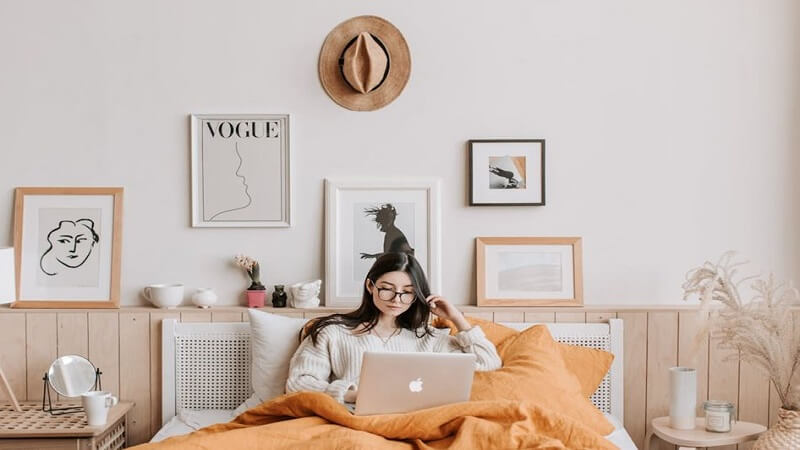In today’s busy world, self-care is more important than ever. Creating a sanctuary at home provides a place to relax, recharge, and focus on your well-being. While many associate self-care with external activities like spa visits or vacations, your home can be transformed into a calming retreat that supports relaxation and comfort. By making thoughtful changes to your living spaces, you can enjoy the benefits of self-care daily.
Your home is a reflection of your lifestyle and habits, so designing it with intention can have a significant impact on your mental and physical health. From a soothing color palette to functional upgrades, small changes can make a big difference. By focusing on specific areas, like the bathroom or bedroom, you can create a personalized retreat tailored to your needs.
Creating a Relaxing Bathroom Space
The bathroom is one of the most important spaces for self-care. It’s where many people start and end their day, making it a prime spot to incorporate relaxing elements. Upgrading your bathroom into a spa-like environment can enhance the way you unwind. Features such as a soaking tub, rainfall shower, or heated floors add comfort and luxury, turning an ordinary space into something extraordinary.
Professional help can make this transformation even more effective. Bathroom remodelers specialize in creating functional and relaxing spaces that suit your style and needs. Whether it’s improving lighting, adding storage, or installing high-quality fixtures, they can make your vision a reality. A remodeled bathroom elevates your self-care routine and adds value to your home.
Setting the Mood with Lighting and Decor
Lighting plays a key role in creating a calming atmosphere at home. Harsh or overly bright lighting can feel overwhelming, while soft, warm lighting fosters relaxation. Dimmable lights are a great addition to spaces like bedrooms and bathrooms, allowing you to adjust the brightness based on the time of day and your mood. For a spa-like effect, add candles or LED lanterns with flickering effects to your bathroom or living space.
Decor can also influence the ambiance. Introducing soft textures like plush rugs, cozy throws, and comfortable cushions can make any room more inviting. Artwork with soothing colors or nature-inspired designs adds a sense of calm. Adding a few indoor plants enhances the atmosphere by bringing in natural beauty and improving air quality. These small changes create an environment that feels both personal and peaceful.
Creating a Dedicated Space for Rest and Relaxation
Having a specific area in your home dedicated to unwinding is important. Whether it’s a quiet reading nook, a yoga corner, or a cozy spot in your bedroom, carving out a restful area can make a big difference in how you relax. Start by decluttering the space to make it feel clean and open. A clutter-free environment promotes a sense of order and calm, helping you decompress after a long day.
In your relaxation space, include items that bring you comfort. A comfortable chair, soft lighting, and a small side table for your favorite book or a cup of tea can make the space functional yet soothing. Adding a sound machine or playing calming music can elevate the experience, creating a place where you can fully disconnect from daily stressors.
Incorporating Nature for a Calming Atmosphere
Bringing elements of nature into your home has a profound effect on creating a peaceful environment. Houseplants, for instance, add life to a room while also purifying the air. Low-maintenance plants like snake plants or pothos are perfect for busy households.
In addition to plants, incorporating materials like wood, stone, or bamboo can give your home a grounded and natural feel. A small water feature, like a tabletop fountain, can add a soothing sound that enhances relaxation. If you have outdoor space, such as a patio or balcony, consider turning it into a mini-retreat with comfortable seating and greenery. Spending time in this space can help you reconnect with nature and take a break from indoor routines.
Incorporating Calming Scents for Relaxation
Scents have a powerful effect on mood and relaxation, making aromatherapy a simple yet effective addition to your self-care sanctuary. Essential oils like lavender, chamomile, and eucalyptus are known for their calming properties and can help create a soothing atmosphere. Use an essential oil diffuser to fill your home with these relaxing scents, or opt for scented candles and reed diffusers for a similar effect.
In bathrooms, adding scented bath salts or shower steamers can elevate your daily routine into a spa-like experience. For bedrooms and living spaces, linen sprays with subtle fragrances can create a fresh and inviting environment. Incorporating calming scents enhances your self-care practices by engaging your senses and promoting relaxation.
Prioritizing Comfort in Every Room
Comfort should be a top priority when turning your home into a sanctuary. Start by evaluating your furniture—are your chairs, sofas, and bedding comfortable and supportive? Upgrading to high-quality pieces can make a big difference. Invest in soft textiles like breathable sheets, plush duvets, and warm blankets to create a bedroom that promotes restful sleep.
Throughout your home, focus on creating spaces that feel cozy and inviting. Add decorative pillows to your living room, lay down soft rugs, and use curtains or blinds to control natural light. These small adjustments can make your home a place where you feel comfortable and cared for, no matter which room you’re in.
Transforming your home into a sanctuary for self-care is about creating spaces that promote relaxation, comfort, and a sense of balance. By focusing on key areas like lighting, decor, and nature, you can design an environment that supports your physical and mental well-being. These changes don’t have to be extravagant—small, thoughtful upgrades can go a long way in making your home a place of peace and renewal. Prioritize what makes you feel good and enjoy the benefits of a space designed just for you.
